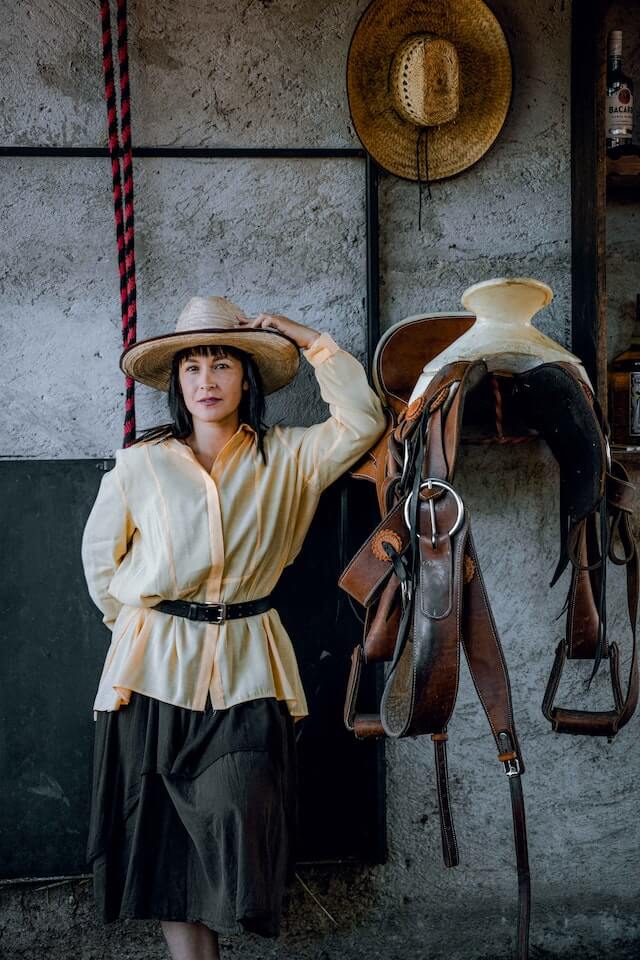Let’s gear up for an intriguing journey together! A fascinating delve into something as seemingly mundane as a horse riding hat. Have you ever wondered about the history of the equestrian helmet? What factors prompted its evolution across centuries? Is there more to these fixtures than just protection? The mystery is as deep-rooted as the old tradition of horse riding itself and decode we shall, in this expanse of captivating tales and telling facts.
Homing onto these sturdy hats, they project a testament of architectural prowess, as they combine safety design and fashion attributes. In the equestrian world, they represent an essential statement of style and safety—each adapting over ages to meet riders’ evolving needs and tastes. This blog aims to enlighten you on the fascinating trajectory of horse riding hats over time, their soul-searing chronicles, and how they have come to acquire their current form.
Before we proceed to the stories of equestrians gallantly riding into battles or leisurely enjoying a forest trail, it is paramount that we appreciate and understand the very object that has kept them safe through the ages—the equestrian helmet.
The Origins: Birth of Protective Headgear
The concept of a helmet is ancient and pure logic. Anything valuable deserves protection, and what’s more precious than the human head? The first recorded equestrian helmet dates back to classical Greek times and was a military necessity—a hard leather cap initially, later reinforced by metal.
The Romans, taking a leaf out of the Greek silhouette, introduced face guards and neck protection. In the medieval ages, the helmet became more elaborate in line with the grandeur of armor attire. Modern helmets’ rounded shape takes inspiration from these bulky, effective headgears.
Equestrian sport, initially limited to military and nobility, gradually included common-folk, leading to protective headgear requirements differing from those on war fields. Further refining aesthetics without compromising safety gave birth to the modern equestrian helmet.
Overseas Influences and Cultural Impact
Equestrian hats, like design in general, have had their chapters of cultural influences and overseas impacts. The jockey cap, for instance, became popular in the 19th Century due to its lightweight design and shallow depth, unlike the bulky types found in the standard hunt helmet.
The bowler hat, originally designed to protect gamekeepers from low hanging trees, was adopted by equestrians as an ideal design balancing robustness and comfort. Borrowed from English styles, the hard hat soon endeared itself to the American equestrian culture.
Leap into the Modern Era
Post World War II, we saw the equestrian community actively seeking more effective protective gear. The 1960s introduced safety design as a part of hat manufacturing, focusing more on lightweight materials and comfort.
In the late 20th century, the case of interfaces between design, fashion, and safety got more pronounced, leading to today’s wide range of helmet choices. The purpose determines the design – molded plastic for competitive sports, phase change materials for temperature regulation, and CCT (Cranial Containment Technique) for dressage helmets ensuring extra protection.
Updated Safety Standards
With the hats’ evolution, stringent safety standards have been established. Approval systems such as PAS015, VG1, ASTM, and SNELL have become mandatory benchmarks. Some brands also opt for an additional MIPS system (Multi-directional Impact Protection System) enhancing multi-angled impact protection.
This thoughtful mix of stringent safety measures, functional aspects, and appealing aesthetics has reshaped the modern equestrian helmet, intertwining fashion and safety elements in a uniquely impressive way.
Advancements in Helmet Design and Technology
The transition from basic leather caps to advanced engineered helmets has been a captivating journey. With technology taking center stage, we now see digital-fit systems, smart helmets with built-in sensors measuring impact force, GPS technology, and integrated communication devices. The transformation is a testament to the advanced technology and the sport’s rising dynamics.
Fashion Quotient in Hats
Today’s helmets are diverse, with options resting on personal preference, discipline, or climate. Additionally, they have become a style statement and unique identifier for riders. From the classic black velvet top hat, personalized helmet options, to event-specific designs—the appearance of equestrian hats has attained an undeniable charm.
Conclusion
The journey of horse riding hats from simple leather caps to technological wonders has been nothing short of an innovative and stylistic miracle. In the labyrinth of advancements and aesthetics, the focus on safety has remained the heart of these transitions.
The hat is more than just gear. It’s a tribute to equestrian history, a beacon of safety in the thrilling sport, and an emblem of personal style, thus making it as multifaceted as its wearers. It’s not just about the evolution of the horse riding hat, but about the wearer’s evolution—the equestrian. An evolution of aesthetics, safety standards, and an ever-evolving testament of the fascinating world of equestrian sport.

